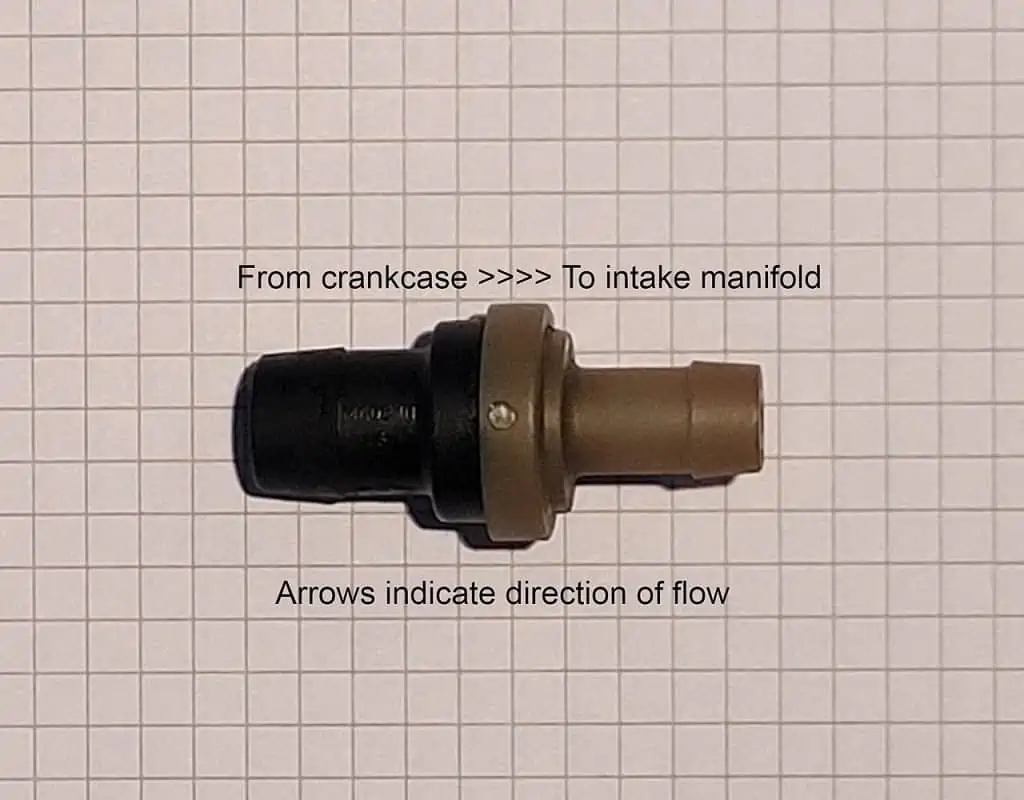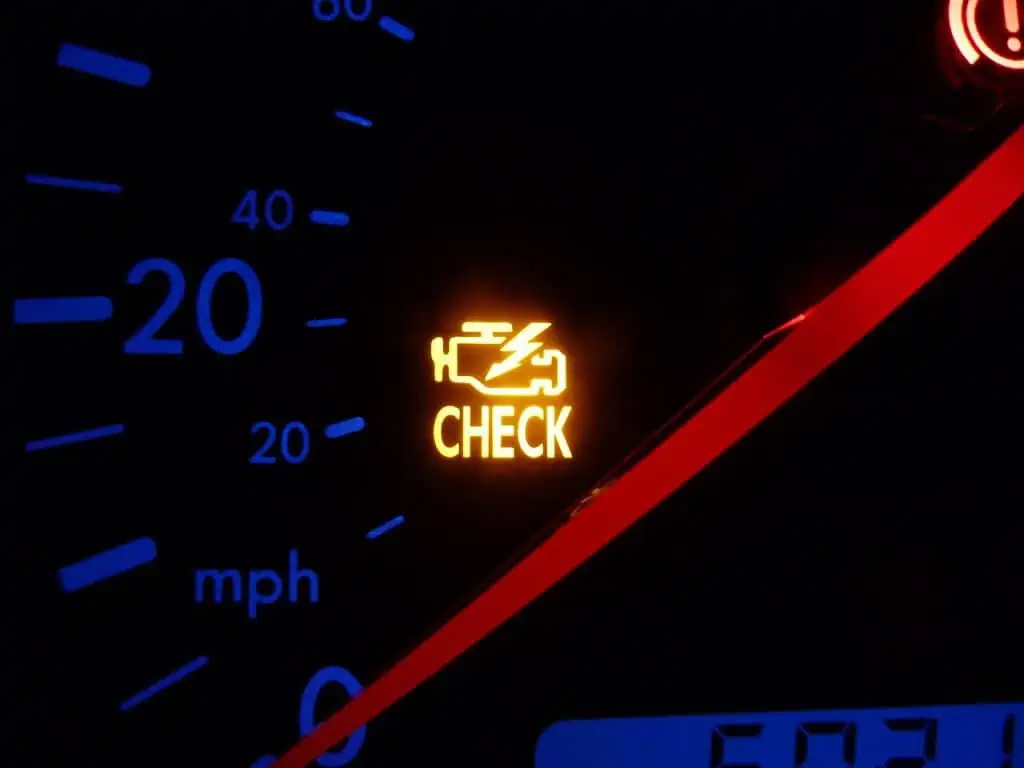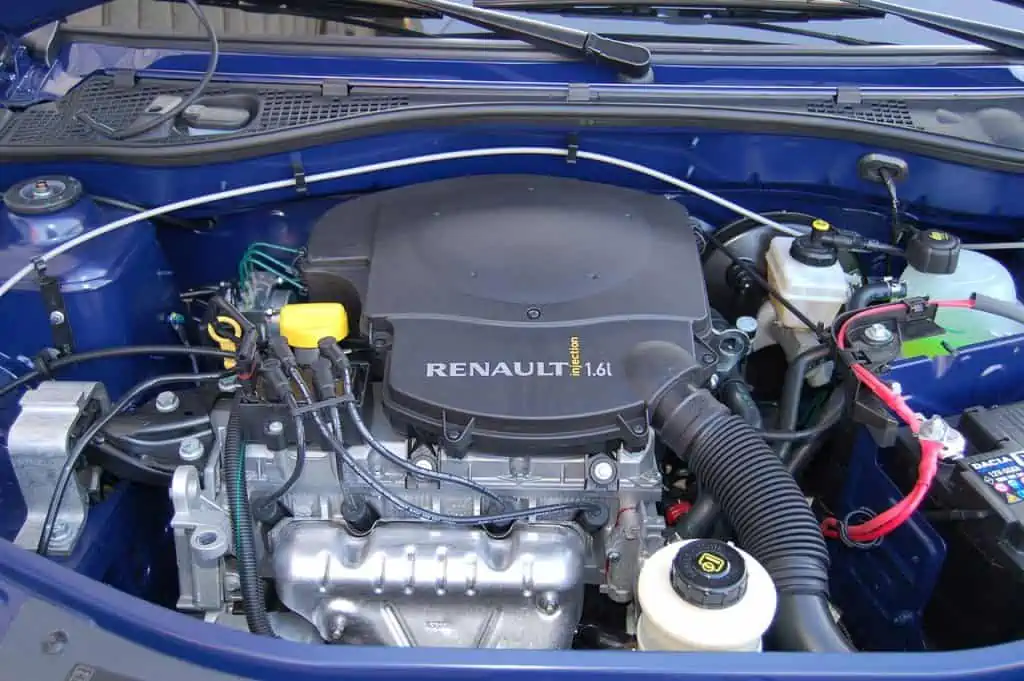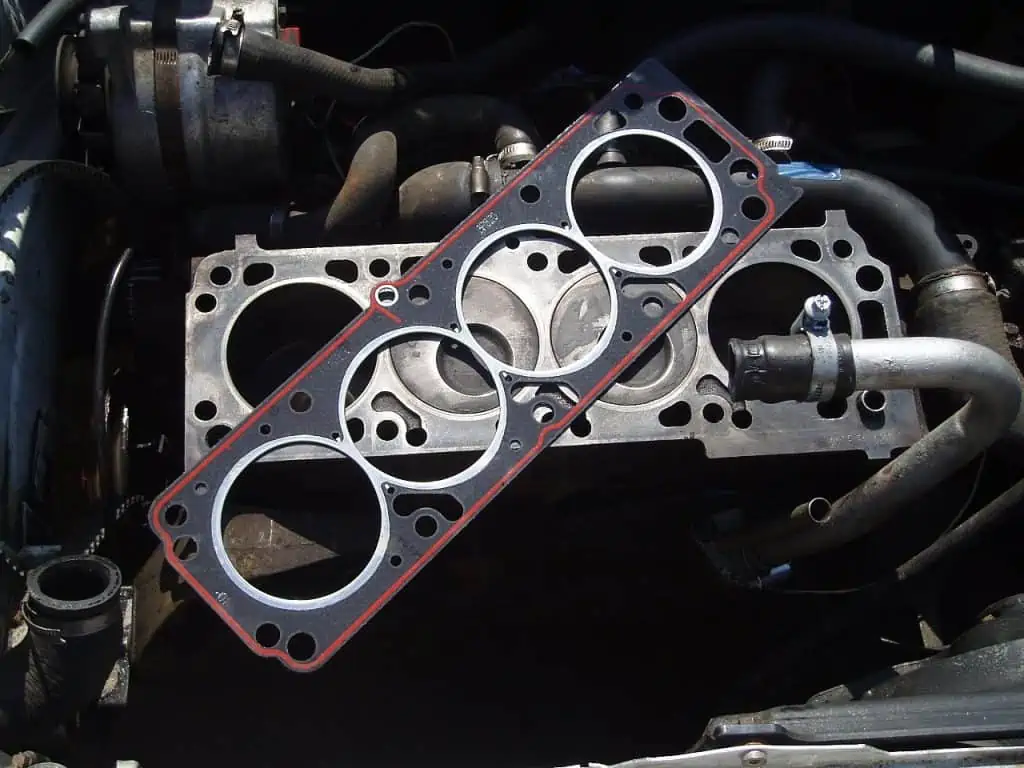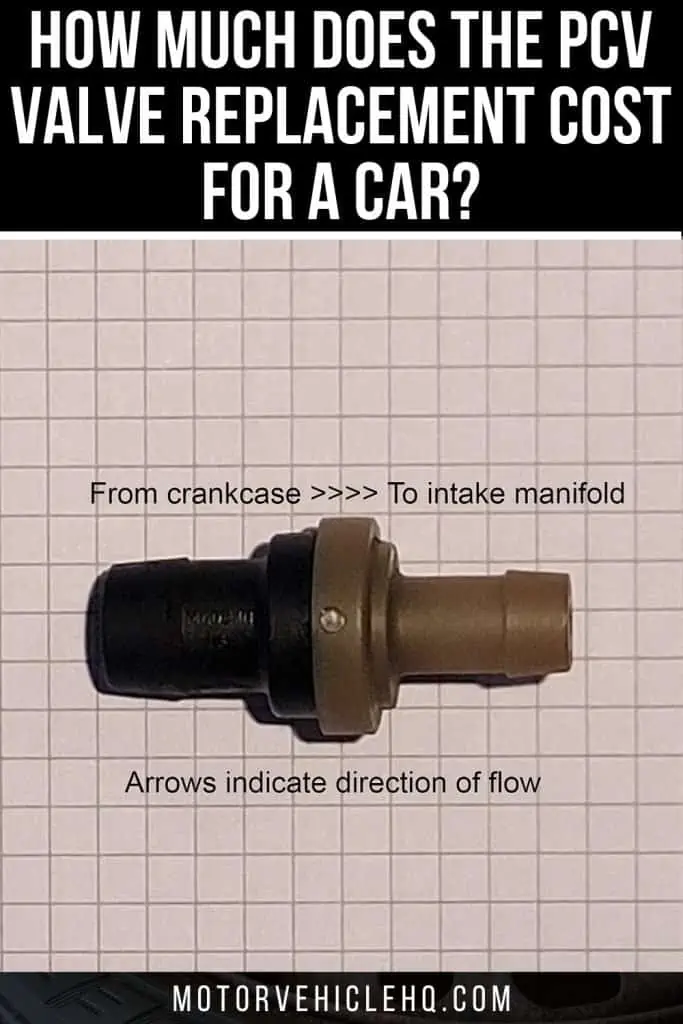Are you considering a PCV valve replacement because you’ve noticed some odd symptoms in your automobiles, such as a check engine light and poor engine performance? If so, you’ve come to the right place because there’s a lot to talk about on this subject.
This PCV valve can become stuck in either the fully open or fully closed position, and anytime this occurs, you end up with an engine full of problems. Dealing with a situation like this can be frustrating.
For this reason, it may be worthwhile to do a PCV valve replacement in advance to head off some of these problems and prevent having an engine that doesn’t function at all.
You must therefore study the signs of a bad PCV valve and how to replace this valve. And to be honest, it’s fairly simple. However, there is no need to fear because we will go through everything you need to know.
We shall first discover what the PCV system and valve are. The location of this valve and how to locate it will next be covered in more detail. After that, we’ll look at the signs of a bad PCV valve and how to identify this issue. So please continue reading if you want to learn more.
A Positive Crankcase Ventilation (PCV) System: What Is It?
Now, let’s study more about the positive crankcase ventilation system in general before we get started on the PCV valve replacement. For those who are just learning about this system and its function in internal combustion engines, this will be quite helpful.
Every contemporary internal combustion engine has a unique mechanism fitted called the positive crankcase ventilation system. The engine can breathe easier and run much longer thanks to this arrangement. But how does this mechanism function?
This ventilation system, however, relies on a vacuum to function. It provides for correct airflow and ventilates your engine. A pipe known as a breather tube is located after the intake. On one side of this tube, the air is pushed into the engine, and on the other, the PCV valve opens.
This PCV valve then forces the blowby gases that have accumulated inside the crankcase into the intake manifold, where they will be burned off during combustion.
A PCV valve by Flippythedragonslayer / CC BY-SA 4.0. The PCV valve can get caught in either the fully open or fully closed position, and if this happens, your engine develops a ton of issues. It might be frustrating to deal with a scenario like this.
The blowby that is gathered from the cylinder’s work would have nowhere to go if a PCV system didn’t exist. And the engine would have experienced tremendous internal pressure as a result. causing several components to malfunction.
Now that you know how crucial this system is, you can see why the PCV valve replacement when it malfunctions is so necessary. But I’ll get to that later.
Diagram for the PCV Valve
Let’s first discuss this component in general and learn more about how it functions, specifically the PCV valve diagram before we get into the PCV valve replacement. Understanding the inner workings of this system will be especially helpful to you.
As we previously explained, the PCV system is a vacuum-driven system that aims to let your engine breathe and lessen pressure on its internal components. Without it, the engine will essentially self-destruct.
And the PCV valve is crucial in preventing this. This is a crucial element in preventing harm to your engine.
This valve is often shut off when the engine is not running. However, as soon as the engine reaches the right operating temperature, a vacuum is formed inside the engine, and the valve then opens.
The stored gases are then released when the valve opens, redirected within the intake manifold, and allowed to burn off into the combustion.
Regarding the PCV valve diagram. It is important to note that this is a spring-like device. Based on the vacuum inside the engine, this spring is compressed. This is a continuous cycle that is heavily reliant on how the engine operates and the pressure inside the block.
The valve goes through a lot of cycles throughout its career, and after a lot of kilometers, it will break down, necessitating a PCV valve replacement. But where is the mounting for this PCV valve? Next, let’s learn more about that.
Where Is the PCV Valve Located In a Car?
The position of the PCV valve is an additional intriguing subject that deserves discussion. The precise location of this PCV valve on the car is unknown to many folks who are reading this and want to do a PCV valve replacement.
What location is the PCV valve? That varies from manufacturer to manufacturer, I suppose. The valve cover is where the PCV valve is mostly located. A hose runs from this valve, which is inserted into the valve cover.
Therefore, you should always check for the hose that is running into the engine if you consider how to replace this valve. It’s important to note that there are two hoses. One is the PCV valve hose, while the other is the breather tube.
so that you won’t be misled by this place. Find your engine’s number, then search the web for the engine code plus “PCV valve location.” To do a proper PCV valve replacement, you can find the PCV valve on your car using a variety of sources, including photos.
A check engine light by Wikiuser100000 / CC BY-SA 3.0. The check engine light is most likely the first sign that there is a PCV valve issue with your car and that a new PCV valve is required.
At What Intervals Should You Carry Out PCV Valve Replacement?
Now let’s talk about the PCV valve replacement interval, which is another fascinating subject. When should this valve on your car be replaced? This is a question that a lot of people ask themselves, and we believe it merits an appropriate response.
What therefore is the appropriate interval? It is important to note that there is no replacement interval for this PCV valve.
When you begin to experience the symptoms of a malfunctioning PCV valve in your car, as we will discuss more in this post, you should replace this valve.
But if you’re one of those people that like to work on and fix their autos. This valve may need to be replaced as soon as possible. They are quite inexpensive, so you won’t have a lot of trouble replacing them.
If you bought the car and are unsure of the date the valve was changed. You might just go ahead and perform a PCV valve replacement. After we finish discussing the signs of a bad PCV valve, we will discuss more about this and how it is done.
Which are the Symptoms of a Bad PCV Valve?
As we went over the PCV system’s fundamentals and discovered more about the PCV valve. Before we go into the topic of PCV valve replacement, we believe it is essential to go over all of the problematic PCV valve symptoms.
Knowing the symptoms will be very beneficial to you during the diagnostic process. And how to tell if your car’s PCV valve needs to be repaired or replaced. Let’s now discuss the symptoms.
1. A Check Engine Light Comes On
The check engine light is most likely the first indication that there is a problem with the PCV valve in your automobile and that a PCV valve replacement is necessary.
It is important to note that because the PCV valve is not controlled by the computer, the check engine light won’t be activated by the valve itself. i.e., there is no connection at all between it and the computer.
However, you can obtain error codes that relate to your car’s air-fuel ratio. for example, P0171 or P0175. Or even P0300, which denotes sporadic engine misfires.
Additionally, a few codes are strongly related to the PCV system. The P052E and P053A are these. Let’s discuss the additional symptoms now before moving on to the PCV valve replacement.
2. The Engine Experiences a Harsh Idle
Before we get started on the PCV valve replacement, we’d also like to talk about the rough engine idle.
When the PCV valve malfunctions, the engine will perform poorly, run extremely rough, and be difficult to maintain.
You will have a really difficult time running this engine as it should be run because of the significant RPM fluctuations.
Therefore, it is wise to examine these components first whenever you observe something similar because sometimes the issue is with the smallest details, like the PCV valve. Before we get into the PCV valve replacement, let’s move on to the following symptom.
A car engine by Huhu Uet / CC BY-SA 3.0. To prevent some of the bad PCV valve issues and an engine that won’t run at all, it would be beneficial to change the PCV valve beforehand. As a result, you need to learn how to replace the PCV valve as well as the symptoms of a faulty valve.
3. Improper Air-To-Fuel Mixture
The bad air-to-fuel mixture will be the second symptom linked to this issue. When you experience this, it may be a sign that you require a PCV valve replacement. Why is this the case, then?
This is true, as too much air will enter through the PCV valve and into the intake if it is jammed open. Consequently, the fuel-to-air mixture will be at risk. There will be a time when the combination is fairly lean in this scenario. This implies that there will be an imbalance between fuel and air.
On the other side, if it is closed, you will get an air-to-fuel mixture that is rich because there is too much fuel and not enough air. Both of these scenarios are undesirable and may call for a PCV valve replacement.
4. Misfires In the Engines
Before learning more about the PCV valve replacement, the issue with engine misfires is the next symptom that we’d like to discuss. Why will there be misfires and what are they?
Explosions inside the cylinders that happen too soon or too late constitute misfires in general. It shouldn’t be this way, either. All explosions must be evenly spaced and precisely timed.
Therefore, whenever you get misfires, it may indicate that the coils and spark plugs aren’t working properly. The broken PCV valve in our situation, however, could also indicate that the air-to-fuel ratio is either rich or lean.
Therefore, whenever this occurs, you should fix the issue and do a PCV valve replacement. Later in the article, we’ll talk more about this and how it should be done. Let’s first go over all of the symptoms this issue with your car may cause.
5. Leaks of Oil
The scenario with the oil leaks is the sixth most typical indication that could point to a need for PCV valve replacement. However, why is that so?
This is the case since your PCV valve is stuck shut and prevents the release of pressure.
As a result of this, you can anticipate issues like oil leaks to arise. And in this instance, there will be constant oil leaks.
The valve cover and head gaskets, as well as the front and rear main seals, may begin to leak. If this pressure builds up too high, even the dipstick may be forced out of its position.
You now realize that this is a serious issue that could seriously damage your engine. Even PCV valve replacement is advised as a preventative measure to keep things like this from happening.
6. Existence of Sludge In the Oil Pan
The presence of sludge in the engine oil is another sign that a PCV valve replacement may be necessary. If your PCV system isn’t operating properly, this sludge will build up. Why will this be the situation?
Well, this will be the case since the gases will mix with the engine oil when they are unable to leave the engine. In this instance, they will make a sticky mess.
A head gasket by Collard / CC BY-SA 3.0. The valve cover and head gaskets, as well as the front and rear main seals, may start to leak if your PCV valve is defective. Even the dipstick might be forced out of its position if this pressure accumulates too much. This is a major problem that could significantly harm the engine.
The engine will be covered in this sludge. And might significantly impair your engine’s capacity to lubricate itself.
Not to mention that the engine’s internals will suffer from excessive wear and tear. Thus, a lot of material will be lost in the bearings. Your engine will be able to acquire knock and other extremely unpleasant conditions as a result.
As a result, if your engine has sludge in it but no head gasket blowout, you should investigate more. Then, before it’s too late and the engine fully ruins itself, you should think about the PCV valve as an option and undertake a PCV valve replacement.
7. The Exhaust Produces Black Smoke
The final sign we’ll discuss that points to the need for PCV valve replacement are the presence of black smoke coming from the exhaust pipe. Why is it the case then?
This will be the case since there won’t be anywhere for the blowby gas to escape once it enters the crankcase. Therefore, the piston rings will be the only means of escape.
Additionally, consider the possibility that this gas and oil will mix and lead to issues with oil burning. The exhaust will emit black smoke due to the amount of oil that was burned throughout the operation, and the pistons will be covered with grime and carbon deposits.
You don’t want this, to be honest. But how can you tell whether a PCV valve needs to be changed? Next, let’s find out more about that.
8. A Decrease In Fuel Economy
While there are many causes of poor fuel economy, a broken PCV valve may be to blame.
The intake manifold won’t receive enough fuel when the PCV valve is blocked or broken. The intake will ask for more fuel to be supplied to the combustion system because it believes there is not enough fuel. As a result, you will need to stop at the gas station more frequently and your car will use much more petrol than usual.
Whatever the cause, if your vehicle’s fuel economy significantly decreased, you must have it checked out and fixed by a qualified mechanic as soon as you can to prevent paying exorbitant repair charges.
9. Unusual Noises Emanating from the Engine
Generally speaking, you must take your car to a skilled technician if you hear any weird noises coming from any component of it; the issue could be highly complicated and cause serious problems for your car.
Your engine will hiss when you have a defective PCV valve because of a leak in the PCV valve hose. As a result, your engine may misfire, run rough, and encounter more challenging issues.
10. Too Much Consumption of Oil
Excessive oil consumption is a symptom of issues with many engine parts, just like many of the other warning indications stated.
You may observe a large increase in oil consumption when operating a vehicle with a clogged or damaged PCV valve or hoses, which is not uncommon. The crankcase won’t have someplace to send the extra pressure if the PCV hoses are blocked.
As a substitute, it will return the pressure to the chambers, which will cause an oil leak from the other side. As a result, every time you check the engine’s oil, you will see that it is becoming lower.
Black exhaust fumes by Ruben de Rijcke / CC BY-SA 3.0. Gases and oil will mix if the PCV valve is damaged, which will cause problems with oil burning. Because so much oil was used throughout the process, the exhaust will produce black smoke, and the pistons will be covered in grime and carbon buildup.
When it comes to the safety of the engine, oil decrease is bad. In extreme circumstances, excessive oil consumption might destroy an engine.
11. Contamination of the Filter
The crankcase of your car might not be able to manage the increased pressure buildup when the PCV valve ages. Because of the oil-gas mixture that results from the crankcase sending water vapor to the filters, the filters become contaminated.
How Can You Diagnose a Bad PCV Valve In a Car?
Before learning more about PCV valve replacement, let’s look at how to conduct a diagnostic procedure to determine whether the PCV valve is functioning or not.
It is not difficult to diagnose the PCV valve. You can perform a PCV test to make sure that this component is operating as it should. How can you go about doing this?
The PCV valve should be removed from the car and the PCV hose should remain attached to the valve.
Then crank the engine for a few seconds. As the engine is revving more rapidly, the valve ought to produce more vacuum. Keep in mind that the engine creates more suction at higher engine revs.
You have a defective PCV valve if your PCV valve does not produce a vacuum. It’s time to replace this valve.
You can perform another PCV test by removing the valve and then giving it a little wiggle. A reliable valve should rattle internally. If no rattling sounds are coming from the valve, it is jammed and needs to be changed as well.
Another thing to do is to inspect the valve hose clamps and the hose itself for leakage. If you find that they are damaged, you should replace them as well. Let’s now discuss replacing the PCV valve.
What Is the Process of PCV Valve Replacement?
PCV, or “positive crankcase ventilation,” refers to the plastic one-way regulated tube that serves as the valve’s air intake restriction. The valve opens or closes its passage in rhythm with combustion, rerouting exhaust gases back into the combustion chamber.
Simply put, a functioning PCV valve aids in the engine’s ability to burn cleanly without contaminating nearby components or the engine itself with sludge.
A PCV valve replacement entails removing the old valve by loosening it, then replacing it with a new one. On the engine valve cover’s rubber grommet, the majority of PCV valves are mounted.
The plastic valve should just need to be pulled out with a simple twist when the rubber hose on the other end has been loosened. This part is small, affordable, and simple to replace, but it’s crucial for the health of your engine and vehicle.
What Is Included In a PCV Valve Replacement?
On most cars, a PCV valve is extremely simple to reach and remove; the most frequent additional step is to remove the manifolds first. It will probably only take a few minutes to a half-hour to do this task in a shop.
Another indication that a PCV valve replacement may be required is the presence of sludge in the engine oil. This muck will accumulate if your PCV system isn’t functioning properly. This will be the case because the gases, which can’t exit the engine, will mix with the oil.
A general engine checkup service frequently includes PCV valve checks and replacements, thus concurrent work may also involve checking the oil system, changing the air filter, changing the spark plugs, and inspecting the pistons.
If you purchase a replacement PCV valve online, you might quickly change it yourself. Instead, if you took it to an auto shop, the cost wouldn’t be all that much higher because the labor is so inexpensive. You may take care of it on your own if you have the time, or you could wait until your next general engine maintenance service.
What Is the Cost of a PCV Valve Replacement?
How much does the PCV valve replacement cost, then? We can claim it is incredibly affordable. If you change the PCV valve yourself, it won’t cost you more than a cup of coffee and is only $5 or even less in some circumstances.
On the other hand, you can anticipate paying between $79 and $100 to have a PCV valve replacement done on your car at a shop. Let’s wrap up this article now.
Is the PCV Valve Replacement Worth It?
As we have indicated, one of the least expensive fixes you can make is to replace the PCV valve. However, it might not be worthwhile to spend the time repairing the PCV valve if your car has several other complex issues that would cost nearly what your car is worth in repairs.
What Happens If a PCV Valve Replacement Is Not Done Immediately?
PCV valves are utilized in both engine banks to prevent an incorrect air-to-fuel ratio as well as to manage emissions.
A PCV valve may stop opening and closing in time with the engine’s fuel consumption if it becomes old, stiff, or damaged. Reduced fuel economy is a common initial indicator of an aged valve, and this may cause it.
You may encounter OBD code P0171 if the state of this valve interferes with the fuel and air balance in the first engine bank. The identical issue may also result in code P0174 in engine bank two.
These FIXD codes have a moderate severity, which means that driving with them for an extended period could harm your engine. As time passes, you become more likely to have trouble accelerating, rougher idling, and increased fuel consumption, which could eventually result in engine failure.
How Is a PCV Valve Cleaned?
To avoid dealing with complex issues and eliminate the necessity for PCV valve replacement, cleaning the PCV valve is a recommended practice.
The intake manifold by Alison Cassidy / CC BY-SA 3.0. If the PCV valve is blocked or damaged, not enough fuel will reach the intake manifold. Because it thinks there isn’t enough fuel, the intake will request that more fuel be given to the combustion system.
You must do the following actions to accomplish this:
- If your engine has a plastic cover on it, you must remove it by removing the big bolts on the sides.
- The PCV valve, which is typically a red valve connected by a hose to the middle top part of your engine, is simple to locate once the engine cover has been removed.
- Pull the hose away from the PCV valve after releasing the hose clamp.
- The rubber grommet that typically holds the PCV valve in place must be replaced if it becomes very worn.
- You can pop out the PCV valve once the hoses and grommet have been removed.
- Make sure there is no rattling or clicking that might point to a damaged PCV valve before cleaning it.
- Since the PCV valve is a very straightforward component, using a powerful cleaner won’t put it in danger of being harmed.
- For instance, you can clean the PCV valve using brake cleaner or carburetor cleaner.
- Spraying WD-40 on the ball will make it move perfectly cleanly.
- Try shaking the valve and listening for a rattling sound that indicates the ball is moving smoothly to ensure that the valve has been thoroughly cleaned.
- When you hear that, you are ready to go and should put the PCV valve in the proper location.
The Conclusion
The PCV valve in your car, which is a component of the emission system, allows the air-fuel mixture to exit the crankcase without harming the combustion system.
The PCV valve may become completely damaged or clogged with continued use. If this happened, you need to get it replaced right away to avoid dealing with complex problems that will cost a lot to fix. Even better is identifying problems with the PCV valve before they result in total damage.
Fortunately, specific unusual symptoms point to a faulty PCV valve. These symptoms include a decrease in fuel efficiency, engine misfiring, excessive oil consumption, and black or white smoke coming from the tail of the vehicle, among others.
Get your car checked out by a qualified mechanic as soon as you can if you’ve noticed any of the aforementioned issues.
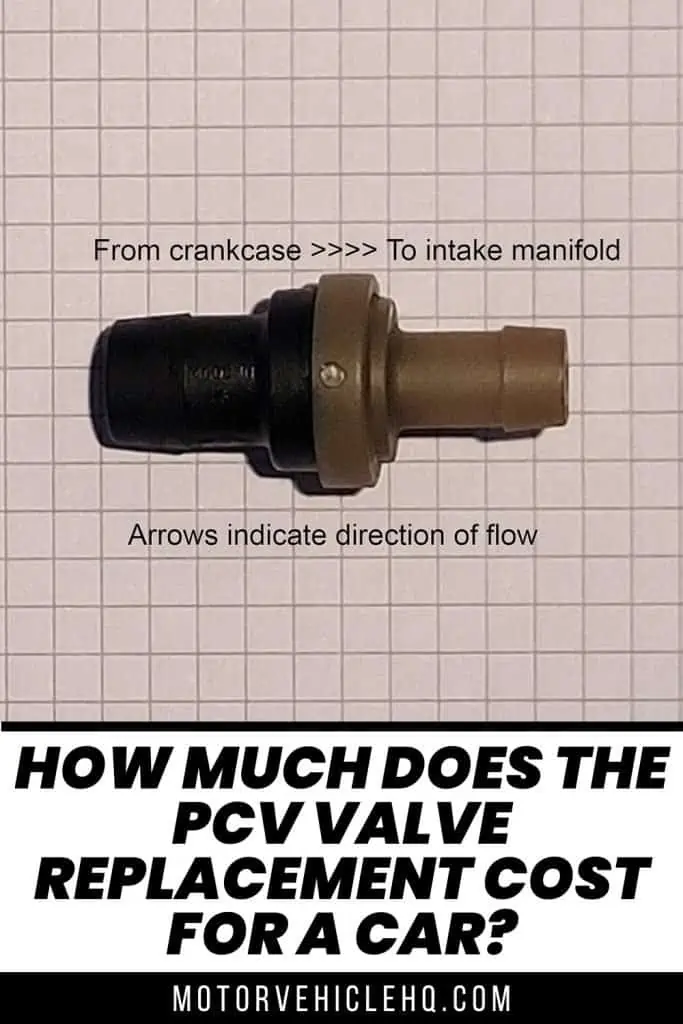
A PCV valve by Flippythedragonslayer / CC BY-SA 4.0

Jim Wicks is the founder of MotorVehicleHQ. With over two decades of experience in the automotive industry and a degree in Automotive Technology, Jim is a certified car expert who has worked in various roles ranging from a mechanic, car dealership manager, to a racing car driver. He has owned more than 20 cars over the past 15 years. Ask him about any vehicle you see on the road and he can tell you the make, model and year. He loves the aesthetics of all things cars, and keeps his vehicles in pristine condition.
In his free time, Jim enjoys getting his hands dirty under the hood of a classic car or taking long drives along the country roads. His favorite car? A 1967 Shelby GT500, a true classic that, according to Jim, “represents the pure essence of American muscle.”
